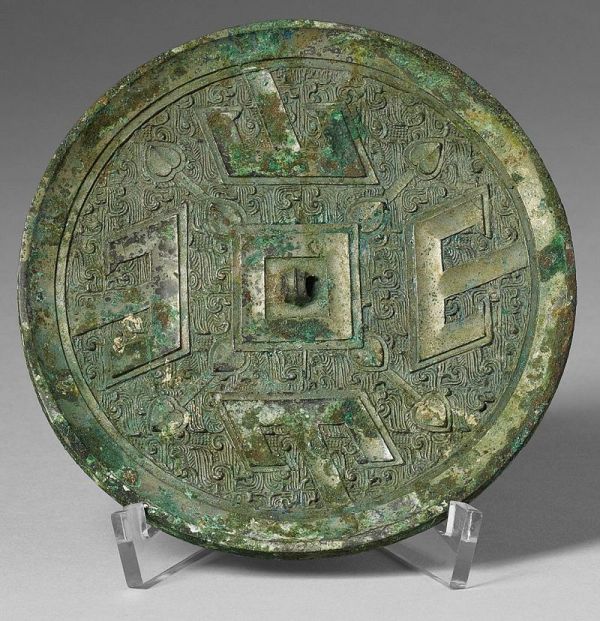
Chinese bronze 'shan' mirror. The small fluted loop framed by a concave square border from which radiate four heart-shaped leaves, each supporting short straight stems terminating in further leaves, divided by four large grooved 'T' motifs converging from the raised rim, all on a fine ground of hooks, wings and feathers, with a steely patina and patches of dark green encrustation.
Period: Eastern Zhou dynasty, Warring States period.
Exhibited at the Chinese art exhibition in London 1935-36, catalogue fig no. 425.
Provenance: Orvar Karlbeck, Axel Lagrelius, Jan-Erik Nilsson collection, 2015
The shiny surface on the face of Chinese bronze mirrors generally comes from the composition of the bronze itself and the method of its polishing.
Right from the Warring States period bronze casters knew that they could achieve a silver effect by upping the tin content in the bronze to over 20%. 30% was better still. (Interestingly, the artisans of Ban Chiang in what is now Thailand knew the same thing even earlier and used it to effect in their bronze rings and bangles.)
That kind of bronze is sometimes known as white bronze. It was polished with mercury, frequently mixed with powdered tin, to achieve a bright silver finish. This had to be done every year or so. In a scene in the wonderful Ming novel 'Jin Ping Mei' (The Golden Lotus), the women are waiting impatiently for the itinerant mirror-polisher to come round because they can't see their beautiful faces any longer. When he finally shows up, they are overjoyed; he puts fresh surfaces on their mirrors - "as clear as an autumnal pool."
I think the phrase is beautifully exact, because these mirrors were kind, not harsh, rather like the bronzed mirrors that we see quite frequently in stores and hotels today.
Source:LH Mak, Gotheborg Discussion List
A